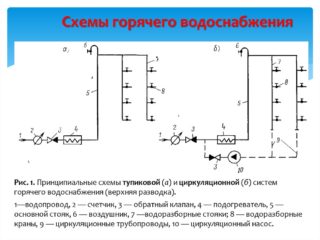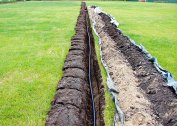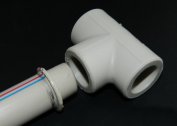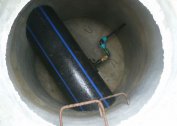The water supply device must be organized in strict accordance with the regulatory documentation. To provide consumers with quality water in the USSR, a set of rules was established that regulates the supply and organization of water supply. He collected useful recommendations, some of which are applicable at present.
SNiP II - 34 - 76
 SNiP "Hot Water Supply" was written by employees of leading research institutes with a scientific degree. It was put into effect from the beginning of 1977 and replaced SNiP II - G. 8 - 62. It determines the operating mode depending on the amount of hot water consumed:
SNiP "Hot Water Supply" was written by employees of leading research institutes with a scientific degree. It was put into effect from the beginning of 1977 and replaced SNiP II - G. 8 - 62. It determines the operating mode depending on the amount of hot water consumed:
- centralized,
- local.
This joint venture regulates the design and quality indicators of water supply systems. The requirements of SanPiN for hot water supply, the inadmissibility of connecting domestic highways with industrial pipes for the prevention of diseases among the population, are prescribed.
Normative references
 DHW systems must be organized in a centralized or individual way by a resource-supplying company previously provided, according to construction documentation, in a two-pipe way in open heating networks, or with the help of heating devices in circular ones.
DHW systems must be organized in a centralized or individual way by a resource-supplying company previously provided, according to construction documentation, in a two-pipe way in open heating networks, or with the help of heating devices in circular ones.
Water supply points are designed and located in the central part of the consumption area. If the height of the house exceeds 50 m, the DHW water supply is divided into several vertical zones. Facilities above 9 floors should be equipped with a circular connection of risers with a connection to a common water main.
DHW pipes should be located at the bottom of the wall, unless otherwise provided by regulatory documentation. Vertical zoning is considered an exception.
When servicing a building with a length of more than 150 m with one water supply system, it is allowed to combine the circulation sections into a network at a reference point.
Testing devices are necessary in the following cases:
- on highways of cold temperatures, ensuring the delivery of water to heating systems in closed pipelines;
- on public highways after mixers in open.
The performance of the existing water supply system is selected on the basis of technical and economic calculations.
Individual hot water supply systems heat the liquid, bringing it to the standard temperature in the following cases:
- lack of a central water supply system;
- remoteness of an object from communications;
- economic inexpediency due to low payback.
The temperature increase is carried out by water heating devices operating on various types of fuel. In such installations, the circulating process is not provided, instrumentation is not required.
The temperature and physico-chemical characteristics of the water at the end point must comply with sanitary standards.
At the design stage, it is necessary to plan measures to prevent the appearance of impurities in order to protect the population from epidemiological danger. Treatment against corrosion and scale must be carried out according to the results of the inspection without loss of quality of hot water for consumers.
 The temperature characteristics of hot water supply must comply with the following standards:
The temperature characteristics of hot water supply must comply with the following standards:
- above 60C for connected to open heating mains;
- above 50C for interacting with closed;
- above 60C for individual systems.
In state municipal institutions, the temperature of the hot water supply should not be higher than 37 ° C; changes are possible at public catering enterprises where heating is allowed.
Hot water of appropriate quality should be supplied to the consumer in the right amount. Consumption is determined by the formula:
G = 5ga
Where G - DHW consumption,
g - consumption from one point, liters per second,
a - Estimated number of water use devices.
The decrease in the temperature of hot water in the mains from the water heater to the point of greatest removal is determined by calculation to comply with the supply standards. The specified number of pumps must be more than two so that the second remains standby.
General Provisions
The regulation stipulates the standards for the design and use of hot water systems for domestic and household purposes in new-built and reconstructed houses.
Hot water supply should be carried out in accordance with the requirements of regulatory authorities and SanPiN, standardizing the design of multi-apartment buildings.
This regulation does not apply:
- production needs of organizations;
- medical facilities using hot water for health improvement and treatment.
When designing water supply, it is necessary, in order to ensure reliability, to indicate the options for regulating and adjusting the system to establish the most efficient mode of operation of the pump during operation in and without circulation, which is required for timely maintenance of technical devices and tuning of automatic control systems. Electronics involved in the water supply process must comply with the rules prescribed in regulatory documents.


